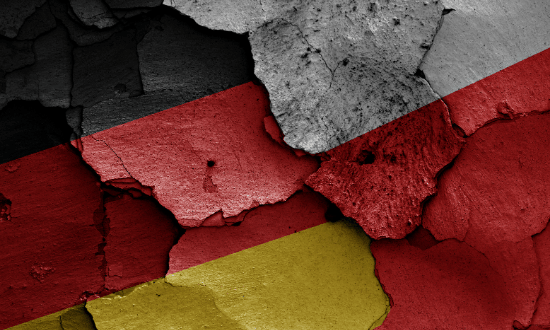How to break with the image of a backward "coal state"? A German lesson in PR
When it comes to energy transition, Poland is mainly associated with the defence of coal as the primary energy source and an aversion to policies aimed at carbon efficiency. Such an image is correlated with the country’s energy profile – Poland is Europe’s largest hard coal producer and the only EU country with such a high percentage of this raw material in its energy mix.
However, the economic landscape of Poland will soon be significantly altered. This is due to the new Energy Policy, which is in fact, a road map for the transformation of the Polish energy sector towards decarbonisation. According to the document, by 2040, Poland will have huge capacities in renewable energy (including up to 11 GW in offshore wind energy, and up to 16 GW in photovoltaic) and nuclear energy (up to 9 GW). At the same time, the share of coal in the energy mix is to fall to as much as 11% (depending on macroeconomic factors).
In this process, Poland can draw heavily from German experience, as the Federal Republic of Germany has a very effective “green propaganda” apparatus at its disposal, making it possible to cover up the shortcomings of the energy transformation (Energiewende) and to emphasise its advantages. Germany – the world’s largest consumer of lignite, Europe’s largest emitter of carbon dioxide, a country with significant problems with effective decarbonisation and struggling with virtually emission-free nuclear power – has managed to convince the world that it is ‘green’ thanks to this efficient information machinery.
Poland should take a close look at the German vision of energy transition, which has been structured and laid out in such a way as to support its political and economic objectives.

German lesson in environmental PR
 Poland should do likewise and use the model of its Energiewende to develop strategic industries. This can be done using huge transfers of funds to implement the transformation – in Germany. The renewable energy sector has been supported by hundreds of billions of euros in this way.
Poland should do likewise and use the model of its Energiewende to develop strategic industries. This can be done using huge transfers of funds to implement the transformation – in Germany. The renewable energy sector has been supported by hundreds of billions of euros in this way.
In September 2020 alone, the total amount of support for German RES under the so-called EEG Umlage was EUR 3 billion. Poland can follow a similar path and use financial mechanisms to develop certain industries’ dynamic development, thus circumventing the various legal blockages to subsidisation. This could have a significant impact on projects such as offshore development or photovoltaics.
This was done, in particular, by establishing the Commission on Growth, Structural Change and Employment, which the German media dubbed the ‘coal exit commission’ or the ‘decarbonisation commission’. Indeed, its main objective was to develop a plan and a deadline for the abandonment of coal-fire power generation by the Federal Republic of Germany. The Commission, starting its activities in mid-2018, was to give Energiewende a new dynamic.
The moment was important and symbolic, as Germany was ending coal mining in its last two mines in 2018. In addition, the 24th Conference of the Parties to the United Nations Framework Convention on Climate Change (COP 24) was held in Poland, a European coal state, in December. The host city for the event was Katowice, the heart of the Polish mining industry, so it was the perfect setting to present the ambitious plan for the largest economy in the European Union to abandon coal power. However, these intentions of Germany were not realised due to problems in the work of the Commission. Nevertheless, Germany managed to organise a spectacular closure of the last two coal mines in December 2018.
The event spread like wildfire in the media, with many articles (in the Polish edition of Deutsche Welle, among others), proclaiming that in Germany ‘the era of coal has come to an end’. However, few journalists have had the in-depth knowledge of the German mining industry to inform their readers that, by closing its mines, Germany is switching to imports of this raw material. For Poland, which has to fight against the image of the only coal state on the map of Europe, such lessons are particularly valuable.
Time for a new deal?
However, Poland should not content itself with directly copying the German solutions standing behind Energiewende – Poland can present a vision of energy transformation that avoids German mistakes, e.g., decarbonisation efficiency. This requires cross-party consistency in implementing such projects – something that the Poles can also learn from the Germans. The idea of Energiewende has been passed on in Germany for the past 20 years like a baton in a relay race – it is passed from team to team, regardless of which parties form the ruling coalition in Berlin at the time.
A good introduction of the idea of Polish transformation can be a significant image bonus for Poland which is suffering from the reputation as a “coal state”. A sophisticated PR approach is an opportunity to create a new image of Polish politics and economy. Considering the strength of the German Energiewende, which skilfully conceals Germany’s dirty secrets (such as its problems with removing highly emitting lignite from its mix), Poland should make every effort to benefit as much as possible from the experience of its western neighbour.
Author: Energetyka24 editors, TOGETAIR editors




